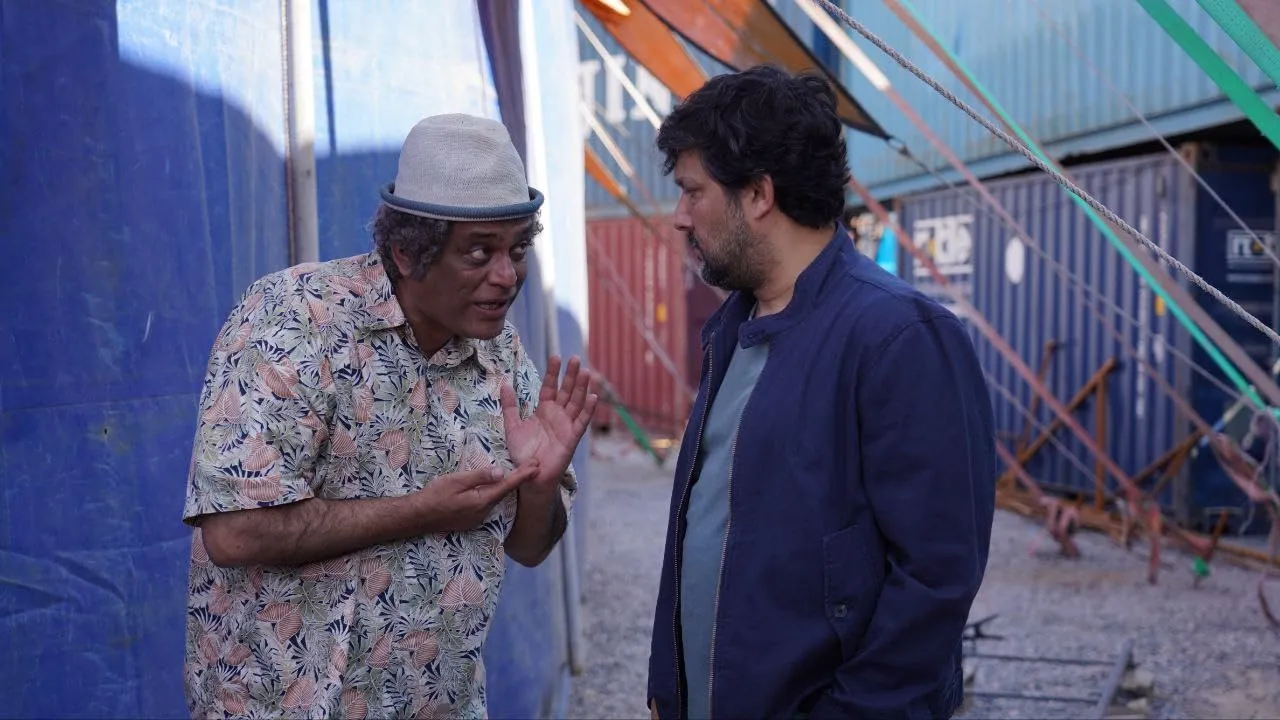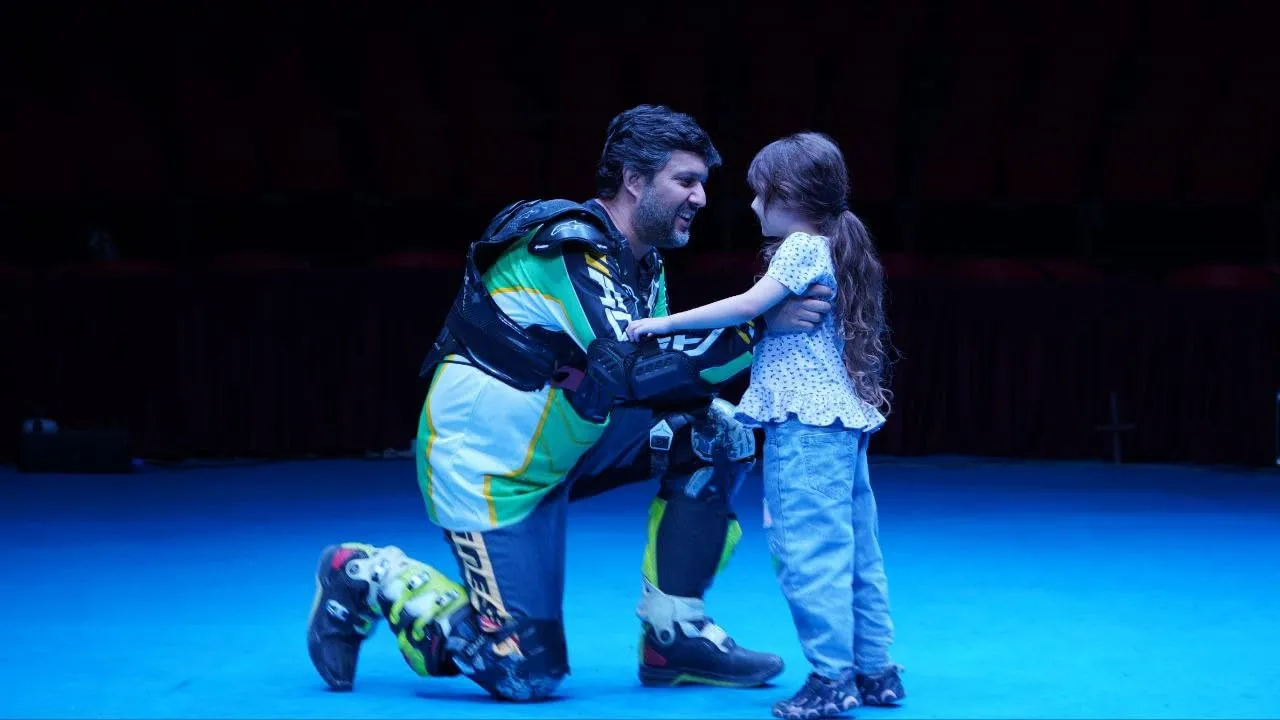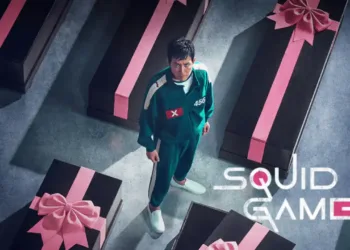In For Rana, we meet Aref (Hamed Behdad), a stunt rider in an Iranian circus, and his wife, Sodabeh (Pantea Panahiha). Their daughter, Rana (Tasnif Hosseini), represents innocence in their humble existence. Financially pressured, their love is braided into a home that teeters on the edge of disaster, much like Aref’s dangerous acts.
The instigating episode is severe: Rana’s heart condition deteriorates, demanding an immediate transplant. This moment converts their lives into a frenetic race against the clock, raising the emotional stakes. It’s a painful reminder of life’s impermanence—one moment, they’re a family; the next, they’re seized by impending loss.
As the family strives to find a donor, they face the avarice of the possible donor’s family, who demand a large sum. The film digs into the ethical quandaries of desperation, asking how far one will go for love. In this moral quagmire, Rana uncovers the difficult truth that survival frequently trumps morality, compelling viewers to consider the societal institutions that commodify human lives.
Balancing Acts: Character Dynamics in For Rana
Aref (Hamed Behdad) embodies the stereotype of the loyal parent, yet he is also a man driven by his goals. His employment as a stunt biker in an Iranian circus is a metaphor for his life—he is always performing, often at considerable personal risk.
Aref’s motivations are inextricably linked to his ambition of breaking a world record, which feeds his zeal and serves as a coping strategy for his financial difficulties. (One could argue that he’s walking a tight line between ambition and recklessness, much like his feats, which alternate between spectacular and hazardous.) His role is a moving depiction of the working-class hero entangled in a society web that requires sacrifice and display.
Aref’s wife, Sodabeh (Pantea Panahiha), is the film’s emotional center, and her journey is a heartbreaking exploration of parental love under stress. As Rana’s health deteriorates, Sodabeh’s problems become more obvious. Her fortitude is tested as she navigates the maze of despair; her begs for assistance echo the silent cries of many moms facing similar circumstances.
The gravity of her plight is almost palpable, as she alternates between optimism and despair, reflecting a global struggle that crosses cultural boundaries. (It’s as if she carries the entire family’s weight, like a modern-day Atlas, but with a heart.)
The donor’s family weaves a rich moral tapestry that contrasts starkly with Aref and Sodabeh’s situation. The interactions between the donor’s wife and son expose a deeper side of humanity: greed intertwined with sadness. The son, motivated by financial desperation, exemplifies the ethical quandaries many people face in difficult situations.
His willingness to trade his father’s heart for a large quantity of money raises troubling questions about value and worth. It’s an unsettling reminder that, in times of crises, human existence can be reduced to a transaction (an idea that feels especially relevant in today’s capitalist context).
The relationships between Aref, Sodabeh, and the donor’s family represent a microcosm of societal stress, reflecting larger themes of class imbalance and moral struggle. Each character, albeit terribly damaged, serves as a mirror for the viewer, inspiring reflection on the nature of sacrifice, love, and the extent one will go to survive. In this sense, For Rana goes beyond its narrative to become a philosophical exploration of the human condition in the face of modern instability.
The Ties That Bind: Themes in For Rana
For Rana is a profound exploration of family and sacrifice, with love serving as both a guiding beacon and a crushing burden. Aref and Sodabeh’s journey exemplifies the extent to which parents will go for their children, motivated by an innate, even basic, desire to protect and give.
This theme strikes a deep chord, demonstrating how familial relationships may lead people to push beyond their moral limitations. (One could argue that love in this film is more than just a feeling; it is a constant force, similar to gravity, pulling, pushing, and frequently warping conceptions of good and wrong.) The film expertly navigates the slippery slope of duty, leaving audiences to wonder: how far is too far when protecting a loved one?
Social class and economic conflicts provide a sharp backdrop, emphasizing the differences that influence the protagonists’ lives. The film contrasts Aref and Sodabeh’s meager resources with the more affluent yet morally dubious donor family.
This difference is more than just a plot device; it represents larger societal issues like class division. Financial desperation serves as a trigger, causing characters to make morally reprehensible decisions. The donor’s son, driven by a desperate desire for cash, symbolizes how economic forces can bend familial loyalty into a transaction. In this regard, Rana is a microcosm of society, where the cost of existence frequently outweighs the sacredness of life—an unpleasant truth that has echoed throughout history.
Despite this bleak landscape, the film demonstrates the strength of community and solidarity. During times of difficulty, the characters seek solace not only in their familial bonds but also in the larger tapestry of human connection. The narrative is punctuated with moments of giving, demonstrating that kindness can bloom even in the face of sadness.
Friends and acquaintances come together to help Aref and Sodabeh, exhibiting a collective spirit that transcends individual problems. This subject of solidarity is especially moving, implying that even at the darkest of times, the human capacity for compassion may illuminate the way forward. (It’s almost as if the film argues that community is the ultimate safety net—one that, however frayed, can catch us when we fall.)
Rana’s treatment of these topics not only encourages thought on the nature of love and sacrifice but also promotes a critical analysis of the socioeconomic systems that define our lives. The interaction between familial love, economic struggle, and communal solidarity creates a rich tapestry of concepts that lingers with viewers long after the credits roll.
Capturing Desperation: Visual and Technical Aspects of For Rana
Iman Yazdi’s directorial debut, For Rana, is a commendable blend of ambition and genuine storytelling. His style is both plain and heartbreaking, allowing the story to build steadily, reflecting the growing tension in the protagonists’ situation. (It’s almost as if he’s guiding us through a slow burn, each moment laden with significance.)
Yazdi’s selections frequently avoid spectacular techniques in favor of a more intimate, character-driven focus—an approach that lends itself to greater emotional resonance. While somewhat slow, the pacing eventually works to heighten the tensions, requiring viewers to dwell on the discomfort of the characters’ circumstances.
Roozbeh Rayga’s cinematography is one of the film’s highlights, creating a visual narrative that supports Aref and Sodabeh’s inner struggle. Rayga’s palette alternates between vivid circus colors and muted tones of ordinary life, resulting in a stunning contrast that represents the characters’ psychological conflicts.
Specific scenes, such as Aref’s exhilarating motorcycle performances set against the grim reality of his family life, demonstrate this dichotomy. The camera frequently lingers on the protagonists’ faces, capturing tiny emotions of sadness and determination—moments that communicate volumes in a world where words are often ineffective.
The production quality adds to the story’s richness, immersing viewers in a truly bizarre universe. The circus background is more than just a setting; it represents the spectacle of life and Aref’s fragile existence. This venue functions as a figurative cage, with the appeal of the show in stark contrast to the family’s dismal realities. The circus’s complex architecture, with its bright tents and wild energy, emphasizes the film’s themes of desperation and hope—each performance a delicate balance between success and failure.
In this sense, For Rana goes beyond the constraints of its plot, using visual storytelling to comment on larger societal themes. The film’s artistic choices encourage viewers to consider the complexities of human emotion and the societal systems that shape the characters’ lives. It serves as a sobering reminder that every performance is based on a story of sacrifice, struggle, and the never-ending desire for love.
The Weight of Emotion: Analyzing the Impact of For Rana
Rana does an outstanding job of conveying deep emotional resonance and bringing us into the characters’ chaotic lives. From the start, the film immerses spectators in a world of real anguish, where the stakes are nothing short of life and death.
Aref’s urgent pleas for rescue and Sodabeh’s haunting sobs create a deep connection that lasts long after the screen fades to black. (The film is almost like a masterclass in emotional manipulation, both heartbreaking and, at moments, disturbingly realistic.)
Specific episodes stand out as emotional high points, such as when Aref addresses the donor’s family, appealing for their assistance against a backdrop of tremendous familial discord. His emotional vulnerability stands in stark contrast to the donor’s son’s coldness, resulting in a devastating and infuriating tension. Similarly, the hospital sequences, in which the couple confronts the truth of their daughter’s illness, act as a furnace for their emotional struggle. The approaching loss weighs heavily on both individuals, leading them to confront their innermost anxieties.
Aref and Sodabeh’s crises radically alter their relationships, demonstrating the delicate balance of love and fury. As financial difficulties increase and hope fades, the couple’s relationships become more hostile. Sharp exchanges punctuate sweet moments, illustrating how desperation may weaken even the strongest ties. (This is known as the “pressure cooker effect,” in which even the most loving relationships can deteriorate under tremendous stress.)
Many people are familiar with this representation of familial affection laced with bitterness from rage and frustration. The film fearlessly navigates the complexity of human emotion, demonstrating how disasters can elicit both support and anger. It challenges viewers to confront the painful reality that while love is a powerful motivation, it may also have negative consequences when combined with fear and powerlessness.
In this way, For Rana is not merely a story of a family in crisis, but also a broader commentary on the human condition—an investigation of how love can both raise and break apart those who hold it dear. The film’s emotional depth cuts across cultural barriers, prompting contemplation on the universality of struggle and the complex dance between hope and despair.
Reflections on For Rana: A Cinematic Tapestry of Emotion and Society
Rana stands out as a moving examination of familial love and societal despair, expertly blending universal themes into the narrative. The film’s merits include its emotional depth, character complexity, and the palpable sense of urgency pervading each scene.
Aref and Sodabeh’s story is both painful and realistic, highlighting the extent to which parents will go to safeguard their children. However, the pacing can be inconsistent, with emotionally driven but sometimes repetitious scenes. (One could argue that it’s a typical case of “too much of a good thing,” with the intensity risking overshadowing the narrative’s upward motion.
The film’s exploration of love, sacrifice, and economic suffering strikes a profound chord, prompting viewers to consider their lives and societal institutions. In a society increasingly defined by financial inequality, Rana acts as a mirror, reflecting the struggles of numerous families facing similar problems. Its significance in modern culture cannot be emphasized; it forces viewers to confront painful facts about human connection and the moral quandaries we face in desperate times.
Finally, For Rana is more than just a story of a troubled family; it’s a cry for empathy, a reminder that every hardship is rooted in a shared humanity. The story encourages us to recognize our interconnectedness and ponder how we could respond when the circus of life requires our steadfast support.
The Review
For Rana
For Rana is a stunning exploration of love, sacrifice, and societal conflict, conveying the emotional upheaval of a family in peril with genuine honesty. Iman Yazdi's directorial debut combines heartbreaking storytelling with breathtaking cinematography, leaving viewers with significant moral quandaries. While the pacing occasionally falters, the film's emotional depth and universal themes ring true, prompting us to consider our interconnectedness in times of crisis. Finally, it serves as a powerful reminder of how far we will travel for those we love.
PROS
- Deep emotional resonance that evokes empathy.
- Strong character development and relatable dilemmas.
- Striking cinematography that enhances storytelling.
- Relevant commentary on societal issues like class disparity.
- Intimate portrayal of family dynamics under pressure.
CONS
- Pacing can be uneven at times.
- Some scenes may feel repetitive.
- Heavy themes might be emotionally taxing for viewers.




















































